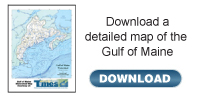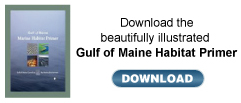Wolfish May Receive Federal Protection
by Catherine Coletti
The Atlantic wolffish, which earns its namesake for the mouthful of canine teeth it uses to crush mollusks, sea urchins and other bottom-feeders, could become the first marine fish in New England to receive federal protection under the Endangered Species Act.
The Conservation Law Foundation filed a petition with the National Oceanic and Atmospheric Administration in October to change the status of Atlantic wolffish from a species of special concern to endangered.
An endangered species listing under the ESA would require federal agencies to implement a recovery plan to protect and restore the wolffish, as well as to designate and protect its critical habitat.
In early January, NOAA announced an official review to determine if federal protection under the ESA is warranted. NOAA will release a finding by October 2009.
The CLF petition cited scientific studies that show, over the past twenty years, severe declines in wolffish populations and destruction of the deep underwater habitat that the fish needs to successfully reproduce and survive.
The Atlantic wolffish lives along the ocean floor in the frigid depths of the Gulf of Maine with the help of an antifreeze compound in its blood that prevents it from freezing. They are a slow growing and large species, weighing in at 40 pounds when mature.
See the full announcement of NOAA’s official review in the Federal Register.
For more information about Atlantic wolfish, see NOAA’s fact sheet.
[ back to top ]
|








